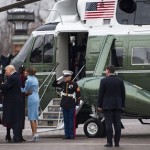The contours of a new U.S. foreign policy doctrine–bilateralism–have emerged out of the flurry of executive orders that President of United States Donald Trump issued in the first weeks of his administration. Trump has broadcast to the world, through interviews and his choice of cabinet appointees, his intentions to challenge the direction and substance of America’s post World War II global ‘liberal’ order, expressed in multilateral institutions, such as the World Bank (WB) and International Monetary Fund (IMF), mega trade deals like the Trans-Pacific Partnership (TPP) and support of regional organisations like the North Atlantic Treaty Organization (NATO) and the European Union (EU).
By terming some of these institutions as obsolete, and pulling out of trade deals that he regards as killers of American jobs, he is displaying a marked preference for political-style deal making and bilateralism in trade.
One of Trump’s early executive orders, giving effect to his campaign promise, was to pull the U.S. out of the TPP, a decision that has roiled the U.S.’s security alliances in East Asia, affecting Japan, in particular. This comes at a time when China is causing heightened tensions in the region. Singapore, a close friend of both the U.S. and China, has interpreted this as an American retreat from the Asia-Pacific—only five years after former President Barack Obama announced that the focus of U.S. foreign policy was a pivot to Asia.
TPP was in trouble even before Trump pulled the plug on it. The deal was under fire for secret negotiations and granting of punitive legal powers to multinationals at the cost of national governments. So a world minus the TPP is not unwelcome to countries like India, which were not included and which set store by national sovereignty.
Obama had recognised the changed global equations brought about by the economic rise of China and India with its concomitant politico-military potential. But he tried to maintain the U.S.’s global leadership by making fine speeches, sustaining security coalitions such as NATO, bolstered by U.S. military technology and platforms, and countering terrorism through drone warfare. These efforts were dignified as a policy of ‘strategic patience.’
Trump is animated by a completely different perspective. He believes that the U.S.’s global leadership has resulted in the average American being shortchanged and that has to be reversed by making better bilateral deals. Therefore, he has not been shy of questioning the underpinnings of U.S. foreign policy such as commitment to NATO, friendship with China and continuing hostility to Russia.
There are mixed signals on China. Trump’s review of the terms of the 1972 Nixon-Kissinger “opening to China” whereby the U.S. had sought its cooperation as a counterweight to the then other superpower, the USSR, has been greeted with disbelief by the Chinese. However, Trump has said that the U.S. does not have to be bound by the One China policy because Chinese currency manipulation and skewed taxation of imports while subsidising exports have resulted in its de-industrialisation. At the same time, while there is talk of punitive taxes on imports and threats to safeguard freedom of navigation in the South China Sea by force, Terry Branstad, known to be a friend of Chinese President Xi Jinping, was appointed U.S. Ambassador.
Meanwhile, the President embarrassed Mexico to the extent that the visit of President Pena Nieto was called off over Trump’s insistence that Mexico pay for building a wall on the U.S.-Mexico border. Nevertheless, Canada, and more grudgingly, Mexico, have agreed to renegotiate parts of the North American Free Trade Agreement (NAFTA).
Europe is already in disarray over the troubles of the Euro, the refugee influx of 2015, Brexit and the rising popularity of rightwing parties, and Trump’s characterisation of NATO as obsolete. It is equally fearful of Trump’s potential rapprochement with Russia as it is of his threats to dismantle the nuclear deal (the Joint Comprehensive Plan of Action) with Iran that is in close physical proximity to the European continent.
An important signal comes from Trump’s interaction with UK PM Theresa May. It showed a desire to conclude an early bilateral trade agreement between the two countries. This will strengthen London’s bargaining position on the terms of UK’s exit from the European Single Market. But this will not be easy, considering the imperatives that its former partners in the EU have to sustain their own union. Going forward, all the countries will be trying to reconcile their domestic needs with the paradigm shift in global and regional frameworks.
Neelam Deo is Co-founder and Director, Gateway House: Indian Council on Global Relations; She has been the Indian Ambassador to Denmark and Ivory Coast; and former Consul General in New York.
This feature was exclusively written for Gateway House: Indian Council on Global Relations. You can read more exclusive features here.
For interview requests with the author, or for permission to republish, please contact outreach@gatewayhouse.in.
© Copyright 2017 Gateway House: Indian Council on Global Relations. All rights reserved. Any unauthorized copying or reproduction is strictly prohibited.


